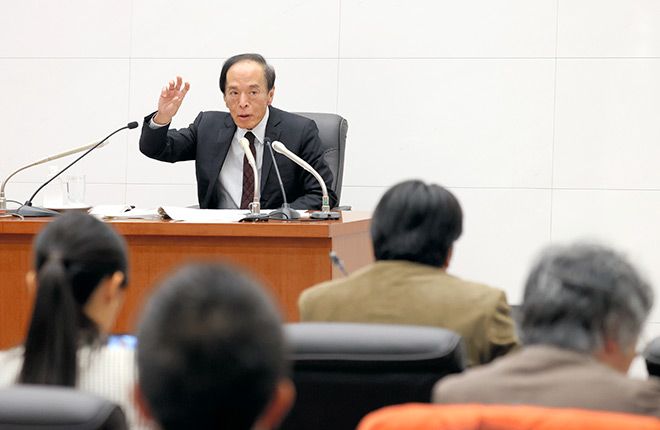
The yen has slightly appreciated on expectations of a shrinking gap in interest rates between Japan and the United States, raising hopes that the trend of a weak Japanese currency is finally over.
However, some financial experts doubt the yen will sharply strengthen anytime soon, saying its weakness stems largely from long-term structural changes in the Japanese economy itself.
They say the entire economy needs adjustments, not just interest rates.
The Japanese currency was hovering around 142 yen to the dollar on the Tokyo foreign exchange market on Dec. 22. It has continued to strengthen since mid-November when it hit 151.92 yen, which was nearly a 33-year low.
The yen’s decline started in 2022. In March that year, the U.S. Federal Reserve started to rapidly raise interest rates to fight inflation.
In contrast, the Bank of Japan has maintained its ultra-loose monetary policy by buying government bonds to keep interest rates low.
Investors have sold off yen and scooped up dollars in response to the rising U.S. interest rates.
However, this month, the U.S. Federal Reserve decided not to raise interest rates for the third straight meeting. This strengthened views that the Fed will start cutting interest rates in the first half of 2024.
Expectations are also growing that the BOJ will end its negative interest rate policy next year, although opinions vary on the timing.
Given such expectations on both sides of the Pacific Ocean, investors are buying back the yen.
FROM TRADE SURPLUS TO DEFICIT
Changing interest rates is one thing. Fixing the Japanese economy is another.
Japan was once an export powerhouse with a trade surplus of around 10 trillion yen.
The need for Japanese companies to convert their overseas earnings into yen facilitated the buying of yen and the selling of foreign currencies. This propped up the value of the yen.
But the trade surplus shrank with the relocation of production bases abroad and the rise in costs for energy, for which Japan relies heavily on imports.
Japan’s trade deficits gradually became more noticeable.
The trade balance for the first half of this fiscal year showed a deficit of around 1.4 trillion yen, according to Finance Ministry figures released on Nov. 9.
“The trade deficit trend is likely to continue,” said Kyugo Hasegawa of Mizuho Bank Ltd. “Major manufacturing industries are shifting their production bases overseas, and exports are not growing.”
Even if interest rates are cut in the United States, the yen’s appreciation will be limited because “the structure of the Japanese economy itself will not change,” he said.
The Bank for International Settlements (BIS) on Dec. 19 released data comparing the yen with the currencies of about 65 nations and regions using the “real effective exchange rate,” which measures purchasing power.
The rate for Japan’s currency in November was 71.62, the lowest since records began in 1970, according to the BIS.
The rate not only reflects exchange rates but also considers each country’s price levels and trade values, indicating an overall “strength” of a currency.
A lower rate means lower purchasing power, making it feel more expensive for Japanese people to buy goods overseas.
On the other hand, tourists visiting Japan increasingly feel that Japanese goods have become more affordable.
The number of visitors to Japan in November reached 2.44 million, returning to pre-pandemic levels, according to a government report released on Dec. 20.
One of the apparent reasons for the increase was that “Japan is cheap.”
Tsuyoshi Ueno of the NLI Research Institute said he believes that a sharp strengthening of the yen is unlikely in the near future, and that the yen will appreciate to around 130 yen to the dollar in two years.
“To raise the real effective exchange rate, it is crucial to promote domestic investment to enhance Japan’s export competitiveness,” Ueno said. “Additionally, there is a need to aim for a society that does not depend on fossil fuels.”
